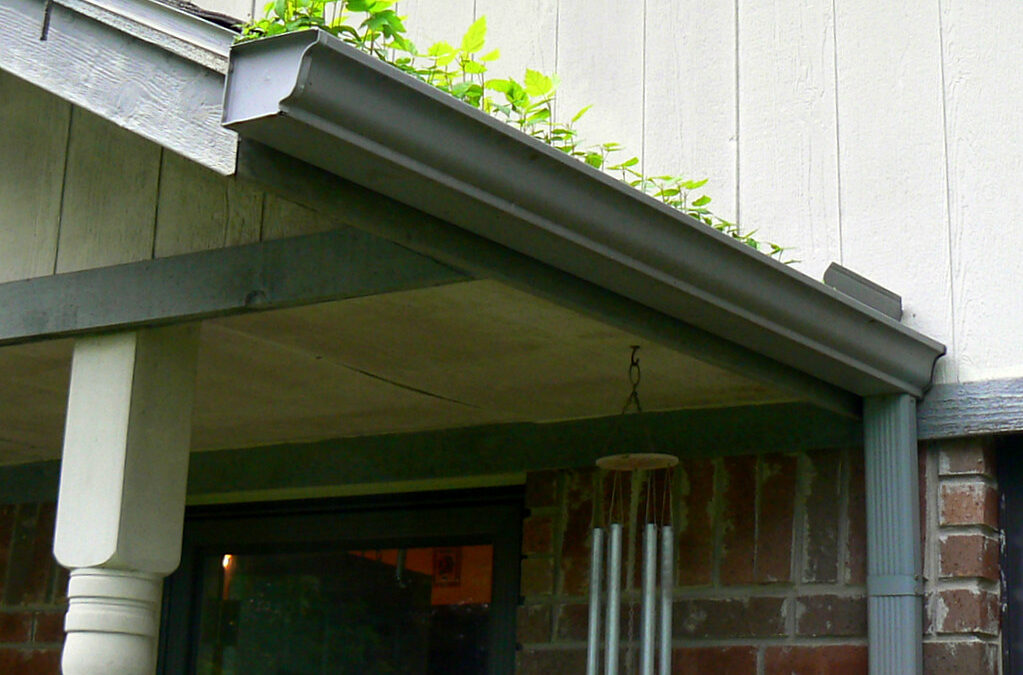Rain gutters, although often overlooked, continue to be an integral component of your roofing system. As a concerned property owner, you would value channelizing your time and efforts to keep them in proper functional conditions. After all, you would repent seeing ice dams during the winter months on your roof, or the runaway water damaging your sidings during monsoon. After the gutter installation process is over, professional service providers provide a set of general guidelines to homeowners, that you need to comply with. A little effort for preventive inspection, maintenance, and cleaning can save huge investments on repairs in the long run.
In case your gutters are cracked, clogged, broken, or missing, the exterior walls of your structure would undergo damage. This explains why rain gutters continue to be a vital element of your roofing system. With a properly functional gutter system, you can divert the rainwater away from the building’s foundation.
Caring for your rain gutters: How to maintain the system?
- Visual inspection: In general, it is recommended to call in the professionals once every four to six months for a proper inspection. However, you need not wait for the experts all this time, as issues with your gutter system may show up any time in between. A simple visual inspection would help you detect possible problems. Make sure to hire a professional gutter installer immediately if you notice:
- The gutters are becoming loose
- Random places develop snags
- The gutters and pulling away from their place
- The gutters are split or cracked
- They have holes, or became rusted
- Clean the gutters regularly
To ensure an unhindered gateway for the rainwater accumulating on your roof, make sure to clean the gutters every few weeks. However, if you have a gutter guard installed, you need to put in lesser effort. You may hire the experts to get one of these accessories installed at the mouth of each gutter. Now, when you clean the gutters, use a gutter trowel to remove the debris and leaves from the area. Once done, test the flow of water using a hose to flush the area.
- Take care of downspouts
In most of the downspouts, splash blocks are present. This feature enables it to collect the water and funnel it when it is still a few feet away from your home. However, with heavy water flowing during storms or the monsoon, these units often get displaced. This indicates that you need to get them positioned in the right place. Failure to do so would result in the pooling of water around the foundation of your home. At times, it might enter the crawlspace. This is why you must install flexible tubes called downspout extensions. With these parts, you can direct the water away from the foundation of your home.
- Repair the pinholes
Over time, the gutters or downspouts may develop rust due to corrosion. This leads to the development of pinholes in these structures. However, you can get them fixed at the early stages, before the problem aggravates. You will need a putty knife, a brush, and some roofing cement to work on these holes.
- Clean the repairing area of debris and dry leaves
- Use a wire brush to clean the rusted holes
- Use a little roofing cement to block the pinholes
- Now, use the knife for smoothing off the cement
This ensures that water or debris would not be flowing over this area easily.
How often should you call in the professionals?
Well, adverse weather conditions often lead to untimely or premature damage to gutter systems. Once you notice any visible damage that lies beyond your ambit of expertise, don’t hesitate to contact the experts. Although most households fix an appointment before the fall and monsoon, you may hire a dedicated service provider any time during the year!
Related posts

Recent Posts
- The Future of Rummy: Trends and Predictions April 16, 2024
- 6 Questions to Ask Your Hardwood Flooring Installer March 28, 2024
- Inside Rinat Akhmetov Foundation’s Blogger Camp for Ukraine’s Young War Survivors February 29, 2024
- Driving Success: Exploring the Benefits of Golf Simulators for Businesses February 23, 2024
- UNLOCKING EFFICIENCY: YOUR GUIDE TO INDUSTRIAL EQUIPMENT MAINTENANCE November 8, 2023
- SELECTING THE RIGHT PUMP MATERIAL: FINDING THE PERFECT FIT FOR YOUR APPLICATION October 27, 2023
- Combining Fundamental and Technical Analysis on TradingView August 26, 2023



Stay connected